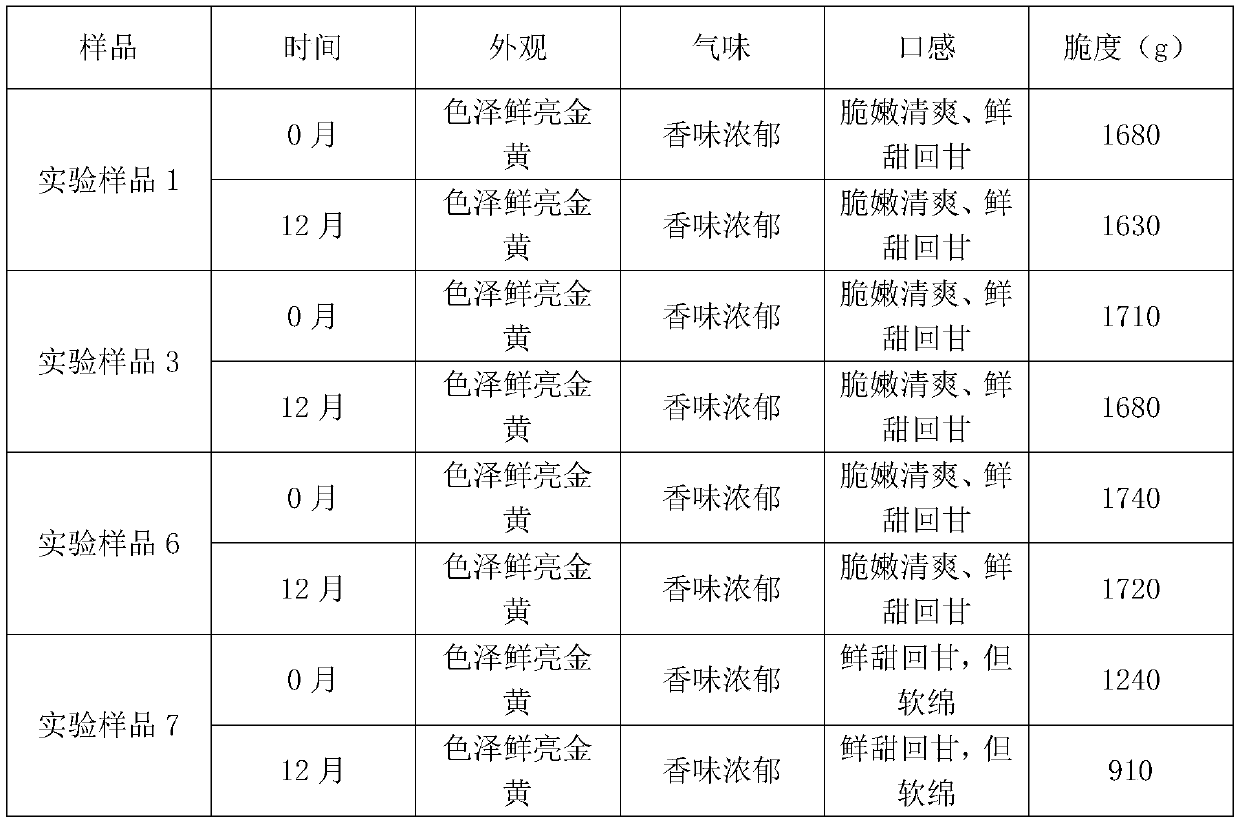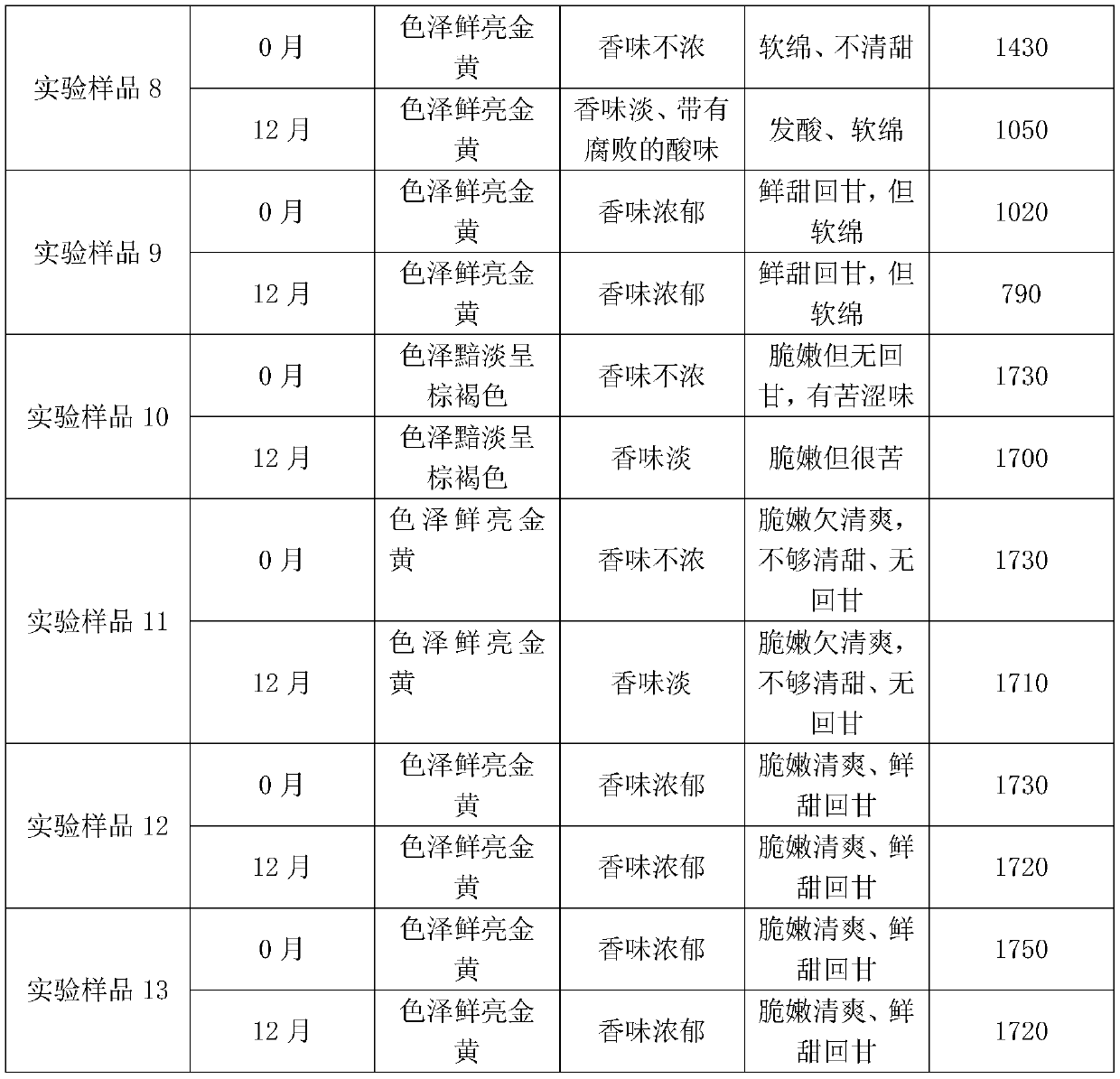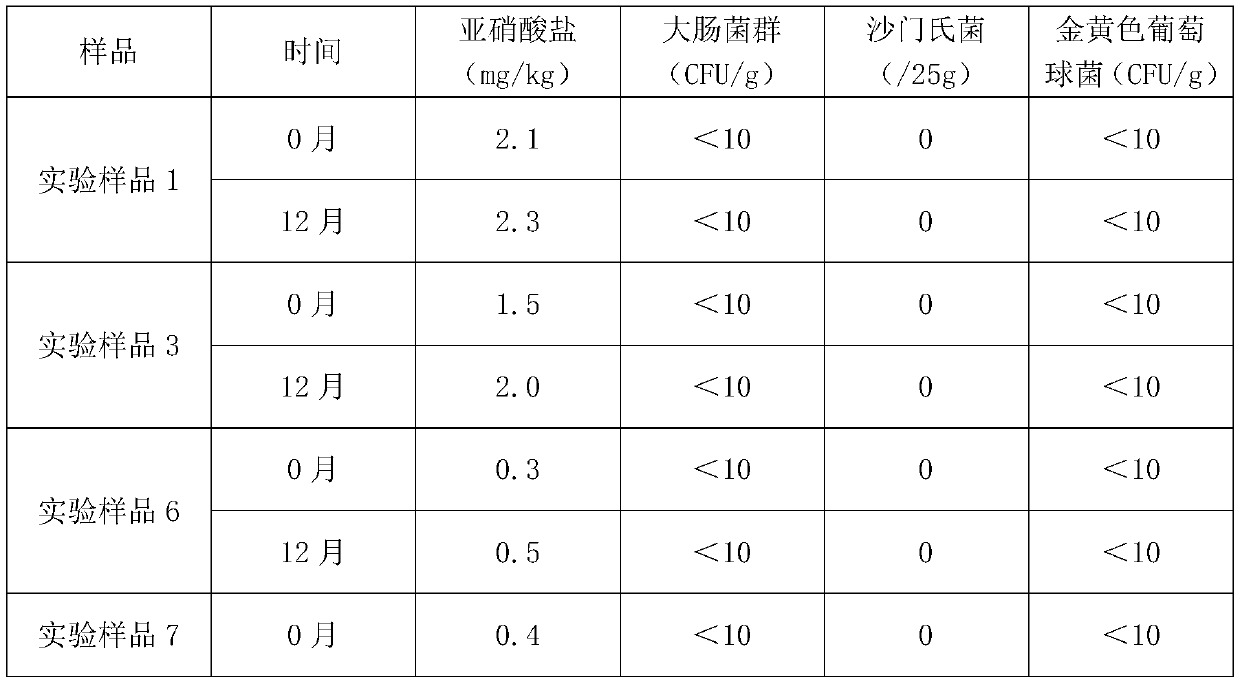Microorganism fermentation process of preserved and pickled vegetables
A technology for microbial fermentation and pickled vegetables, applied in the field of microbial fermentation of pickled vegetables, can solve the problems of low nutritional value of pickled vegetables, unsustainable crispness and flavor, low edible safety, etc., and is suitable for large-scale production. The effect of short production and sterilization time and high sterilization efficiency
- Summary
- Abstract
- Description
- Claims
- Application Information
AI Technical Summary
Problems solved by technology
Method used
Image
Examples
Embodiment 1
[0037] A microbial fermentation process for pickled vegetables, comprising the following steps:
[0038] a. Preparation of slurry: take kelp and persimmon, cut into small pieces and mix evenly to obtain a mixed material, add the mixed material to a pulping machine, add water to make a slurry, and obtain a slurry;
[0039] b. Ultrasonic sterilization: take the raw materials to be marinated, add the slurry and stir evenly, then add alcohol with a volume fraction of 65%, perform ultrasonic treatment, then filter and dry in a sterile room to obtain aseptic prefabricated materials;
[0040] Wherein, the raw material to be pickled is selected from papaya.
[0041] c. Treatment of auxiliary materials: Take F55 fructose syrup and add it to the pot, heat until it melts until slightly red, add turmeric, scallops and sweet-scented osmanthus to stir fry, then remove from the pot, quickly transfer to a sterile room to cool, and get mixed auxiliary materials ;
[0042] d. Aging of soy sau...
Embodiment 2
[0045] A microbial fermentation process for pickled vegetables, comprising the following steps:
[0046] a. Preparation of slurry: according to the weight ratio, take 10 parts of kelp and 5 parts of persimmon, cut into small pieces and mix evenly to obtain a mixed material, add the mixed material into the pulping machine, add water and submerge the mixed material, and perform pulping to obtain slurry;
[0047] b. Ultrasonic sterilization: take 20 parts of raw materials to be marinated, cut into flakes or filaments, add the slurry and stir evenly, then place it at 0°C for 6 hours, then add 250 parts of alcohol with a volume fraction of 70%, and ultrasonically treat 60 seconds, then filter and dry in a sterile room to obtain a sterile prefabricated material;
[0048] Wherein, the frequency of ultrasonic treatment is 25kHz, the power is 150w, and the temperature is 10°C.
[0049] The raw materials to be marinated are selected from papaya and head dish.
[0050] c. Treatment of...
Embodiment 3
[0057] A microbial fermentation process for pickled vegetables, comprising the following steps:
[0058] a. Preparation of slurry: by weight, take 28 parts of kelp and 15 parts of dried persimmons, cut into small pieces and mix evenly to obtain a mixed material, add the mixed material into a pulping machine, add water and submerge the mixed material, and perform pulping to obtain slurry;
[0059] b. Ultrasonic sterilization: Take 40 parts of the raw materials to be marinated, cut into slices or filaments, add the slurry and stir evenly, then place it at 10°C for 10 hours, then add 350 parts of alcohol with a volume fraction of 75%, and ultrasonically treat 90 seconds, then filter and dry in a sterile room to obtain a sterile prefabricated material;
[0060] Wherein, the frequency of ultrasonic treatment is 45kHz, the power is 250w, and the temperature is 20°C.
[0061] The raw materials to be pickled are selected from papaya, radish, bitter gourd and papaya.
[0062] c. Tre...
PUM
 Login to View More
Login to View More Abstract
Description
Claims
Application Information
 Login to View More
Login to View More - R&D
- Intellectual Property
- Life Sciences
- Materials
- Tech Scout
- Unparalleled Data Quality
- Higher Quality Content
- 60% Fewer Hallucinations
Browse by: Latest US Patents, China's latest patents, Technical Efficacy Thesaurus, Application Domain, Technology Topic, Popular Technical Reports.
© 2025 PatSnap. All rights reserved.Legal|Privacy policy|Modern Slavery Act Transparency Statement|Sitemap|About US| Contact US: help@patsnap.com



